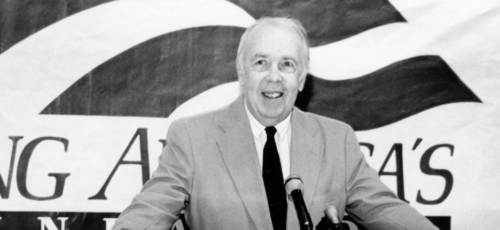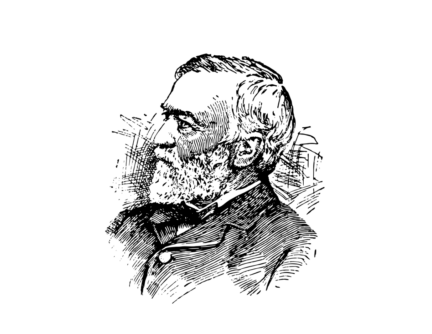One of the problems the nonprofit sector faces is that they face very little scrutiny by the press. Even when newspapers were at their peak twenty years ago, very few of them had a writer whose beat was to cover nonprofits. After the New York Times’s Stephanie Strom abandoned the philanthropy beat in 2012, no major newspaper has a philanthropy reporter.
That is why the Washington Post’s recent investigation of philanthropic diversions is a significant achievement. The Post found an unreported problem among nonprofits and actually decided to do some reporting and prompt a badly needed debate—actions that are highly unusual.
Post reporters Joe Stephens and Mary Pat Flaherty decided to look at the nonprofits that reported on their Form 990s that funds under their control had been “diverted” by third parties—or, in other words, stolen.
The Post hired Guidestar to assist them in their search and set up a website listing their findings. They found about a thousand nonprofits—including hospitals, labor unions, colleges and universities, professional associations, and other nonprofits. They found that Bernard Madoff had conducted much of the fraud, with funds associated with Madoff allegedly bilking Yeshiva University out of $106 million, $38.8 million from the Upstate New York Engineers Health Fund, and $26 million from New York University.
But the Post’s database shows that organizations large and small have been the victims of crooks. In my state of Maryland, the largest nonprofit affected by a “diversion” is Holy Cross Hospital, a fairly large hospital located just north of Washington, D.C. But many smaller nonprofits were hit by thieves, including the Maryland Bible Society and two volunteer fire companies.
The Post focused on the American Legacy Foundation, whose wealth was taken from tobacco companies in a 1999 deal that rewarded trial lawyers suing the companies with ten-figure paydays. The organization hired Deen Sanwoola to buy computers and other information technology, Sanwoola worked for the foundation for nine years, until moving to Nigeria in 2008. Forensic accountants hired by American Legacy charged that Sanwoola cashed phony invoices worth $3.2 million.
In a follow-up story, Post reporters Joe Stephens and Mary Pat Flaherty looked at the Virginia Scholastic Rowing Association, whose long-time treasurer, Lela W. West, once told a New York newspaper that she was strictly a volunteer because “I don’t have time for a paying job.” In 2012, West was convicted of embezzlement and sentenced to ten years in jail, of which all but eight days was suspended. She was ordered to pay $150,000 in restitution, and had already paid $52,000.
But the rest was to be paid back at $250 a month, which meant that the association might not be fully paid back until 2062.
According to Stephens and Flaherty, the rowing association’s executives found that West had spent the group’s funds “had been spent on clothing, car repairs, flowers, airfare to vacation spots, passes to Disney World—even Redskins seasons tickets.”
West refused to comment on her crimes because, she said, she was struggling to recover from a nervous breakdown.
How big a story did the Post uncover? In an op-ed on the Chronicle of Philanthropy website Tim Delaney of the National Association of Nonprofits makes one valid point—namely that we are talking about a relatively small number of nonprofits who have suffered from these “diversions.” Ninety-nine percent of nonprofits don’t have crooks stealing from them.
But, Delaney goes on, the Post was picking on the American Legacy Foundation—an organization that had several millions stolen from them even though the foundation had “state attorneys general (current and former)” that “continue to occupy many seats on the board. . . . If the attorneys general, who know what to look for, could not prevent fraud from happening or know how to intervene while it was happening, that shows it can happen to any organization.”
In other words, the crooks at American Legacy broke into the evidence room during office hours and stole in broad daylight. According to the Post, American Legacy officials stonewalled until they finally revealed the extent of the crimes committed against them. Did any current or former attorney general on the American Legacy board encourage this stonewalling?
Delaney’s other “solution" is that since “fewer and fewer reporters possess a deep understanding of how nonprofits work . . . [i]t is essential for nonprofits to make working with the news media a regular advocacy tool to advance and protect your nonprofit’s mission.”
It’s a reliable rule that the least effective foundations have the largest public relations staffs. Another reliable rule is to sack anyone who thinks he has a strategy for media manipulation. For the solution to what the Post uncovered is a simple one—hire honest employees.
“You go out of the way to trust a nonprofit,” Rev. Raymond Moreland of the Maryland Bible Society told the Post. (A former secretary who stole $86,000 victimized the Bible Society.) “People give their money and expect integrity. And when the integrity goes out the window, it just hurts everybody.”
The Nonprofit Quarterly’s Rick Cohen offers another helpful suggestion—when a reporter calls, tell the truth. “No nonprofit should suppress information that the public has a right to know,” he writes. No nonprofit should hide or camouflage bad news in the hope that somehow the public won’t catch on or donors will overlook” the problem.
The Washington Post deserves credit for unearthing a problem in philanthropy and starting a debate about nonprofits.
I wish the Post’s investigation wasn’t so unusual. There are lots of other scandals that journalists could unearth—if they would bother to investigate foundations.






